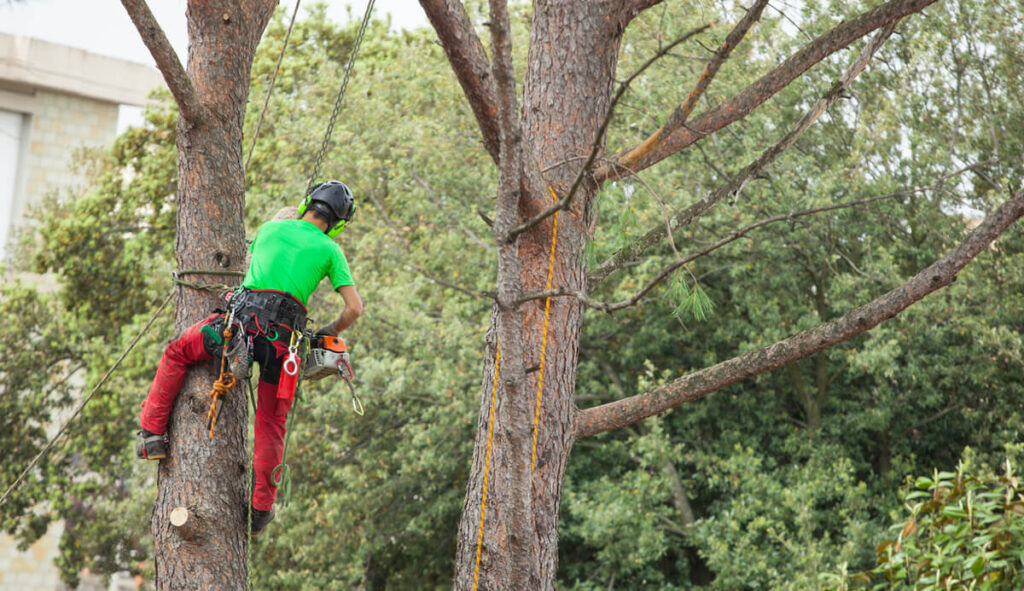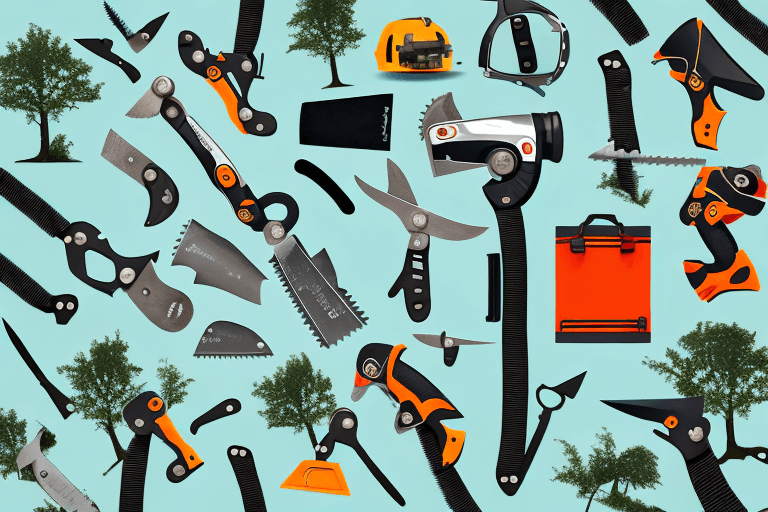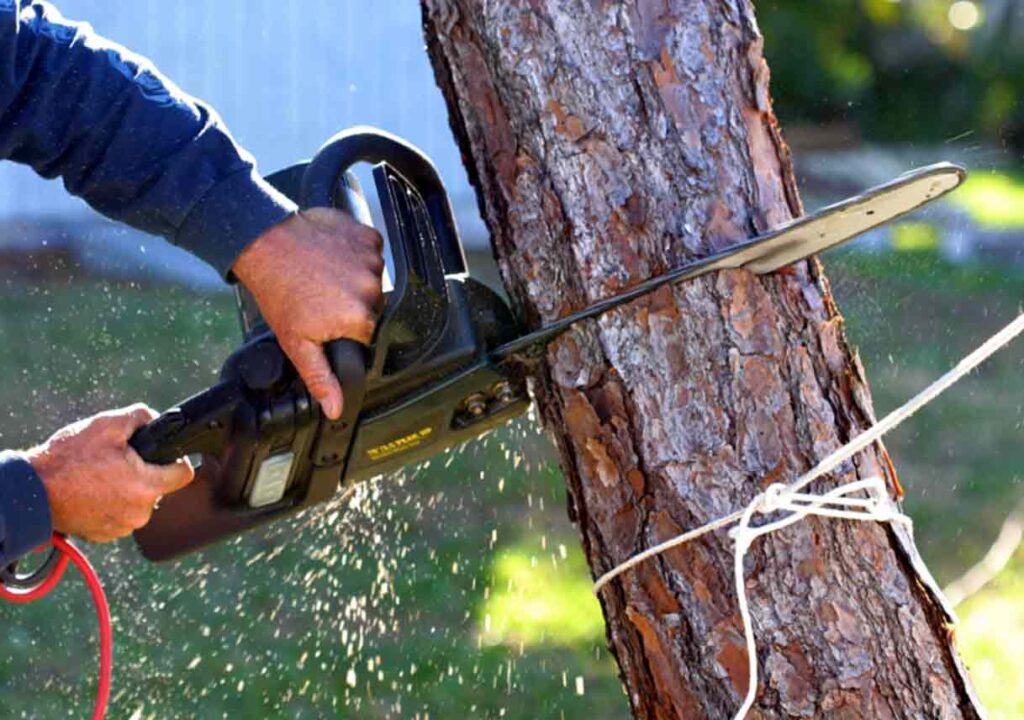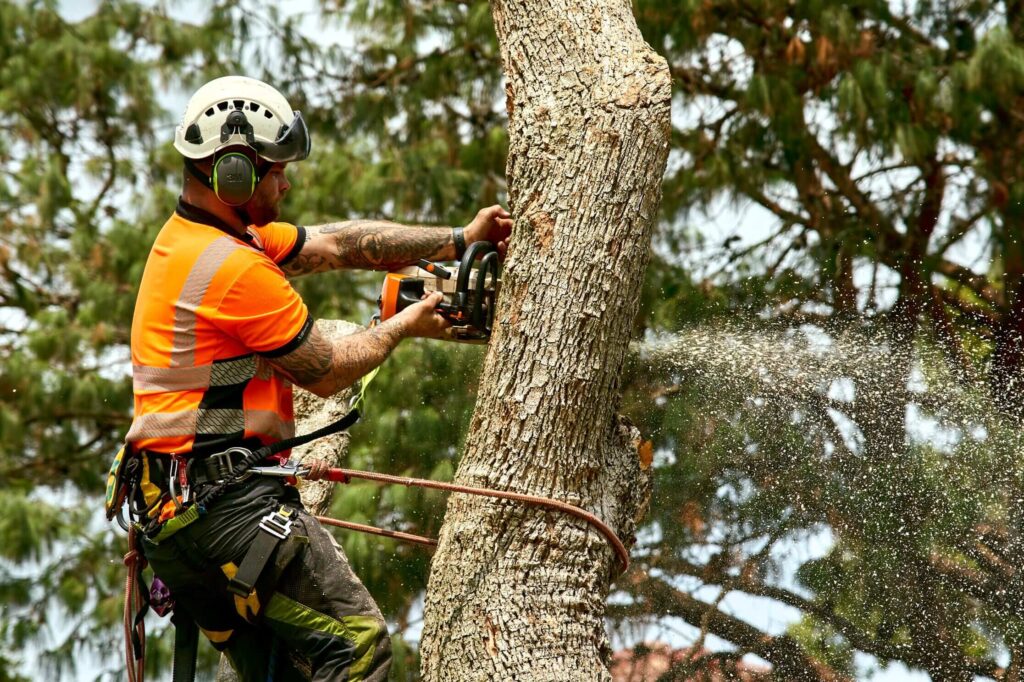Trees are not only beautiful additions to our landscapes, but they also provide numerous benefits, such as shade, oxygen, and aesthetics. However, there may come a time when it becomes necessary to remove a tree. Whether it poses a safety hazard, is diseased, or simply obstructs a construction project, tree removal should be approached with caution and expertise. In this comprehensive guide, we will explore the various aspects of safe and effective tree removal techniques, from understanding the basics to hiring professionals for the job.
Understanding the Basics of Tree Removal
When it comes to tree removal or tree lopping, safety should always be the top priority. Removing a tree without following proper techniques can lead to accidents, property damage, or injuries. Understanding the importance of safe tree removal is crucial for both homeowners and professionals involved in the process.
Importance of Safe Tree Removal
Safe tree removal is essential to prevent accidents and ensure the well-being of those involved. It protects nearby structures, people, and the environment from potential harm during the removal process. Additionally, following proper techniques minimizes damage to the surrounding landscape and preserves the aesthetic appeal of the property.
During the tree removal process, professionals take various precautions to ensure safety. They carefully assess the tree’s condition, considering factors such as its size, health, and proximity to structures. By doing so, they can determine the best approach for removal and minimize any potential risks. Learn more why professional tree removal is crucial for property safety.

Furthermore, safe tree removal involves the use of specialized equipment and techniques. Professionals may employ methods such as tree climbing, rigging, and controlled cutting to safely bring down the tree. These techniques require skill, experience, and adherence to safety protocols to prevent accidents and injuries.
Another aspect of safe tree removal is the proper disposal of the tree debris. Professionals ensure that the removed tree is properly disposed of, either by chipping it into mulch or hauling it away. This ensures that the tree does not become a hazard or contribute to environmental issues.
Identifying the Need for Tree Removal
Tree removal should never be taken lightly. It is important to assess the condition of the tree and determine whether removal is necessary. This may include examining signs of disease, decay, or structural instability. Moreover, trees that interfere with power lines, obstruct construction, or pose a risk during severe weather should also be considered for removal.
When assessing the need for tree removal, professionals consider the overall health of the tree. Signs of disease, such as fungal growth, can indicate that the tree is compromised and may need to be removed. Similarly, trees with extensive decay or hollow trunks may pose a safety risk and require removal.
Structural instability is another factor that may warrant tree removal. Trees with large, overextended branches or leaning trunks can be prone to falling, especially during strong winds or storms. Removing such trees can prevent potential damage to property and ensure the safety of people in the vicinity.
Additionally, trees that interfere with power lines or obstruct construction projects may need to be removed. In these cases, professionals work closely with utility companies or construction teams to safely remove the tree without causing disruptions or accidents.
Overall, understanding the need for tree removal and prioritizing safety is crucial. By following proper techniques and considering various factors, homeowners and professionals can ensure that tree removal is carried out safely and efficiently.
Preparing for Tree Removal
Before undertaking the task of tree removal, proper preparation is essential. This involves assessing the tree’s condition, gathering the necessary equipment, and ensuring the safety of everyone involved.
Assessing the Tree’s Condition
A professional assessment of the tree’s condition is crucial to identify potential risks and determine the most appropriate removal technique. Signs of decay, damage, or weak branches can indicate that the tree may require specialized techniques or equipment for safe removal.
During the assessment, the arborist carefully inspects the tree from top to bottom, examining its trunk, branches, and roots. They look for any signs of disease, pest infestation, or structural weaknesses that may compromise the tree’s stability. By thoroughly assessing the tree’s condition, the arborist can develop a plan that ensures the safe and efficient removal of the tree.
In addition to visual inspection, the arborist may also use advanced diagnostic tools such as resistograph or sonic tomography to assess the internal condition of the tree. These tools help detect hidden decay or cavities that may not be visible to the naked eye.

Gathering Necessary Equipment
Once the tree has been assessed, it is important to gather the required equipment for the removal process. This may include chainsaws, ropes, harnesses, and protective gear to ensure the safety of the workers. Proper equipment ensures efficiency and minimizes the risk of injuries during the tree removal.
When it comes to chainsaws, professionals use different types depending on the size and type of tree being removed. For smaller trees, a lightweight chainsaw with a shorter bar may be sufficient, while larger trees may require heavy-duty chainsaws with longer bars and more power. The choice of chainsaw depends on factors such as the tree’s diameter, density of wood, and accessibility.
In addition to chainsaws, ropes and harnesses are essential for safely lowering cut tree sections to the ground. Arborists use specialized climbing ropes and harnesses that are designed to support their weight and provide stability while working at heights. These safety measures ensure that the tree removal process is carried out with precision and minimal risk.
Protective gear is another crucial aspect of tree removal preparation. Workers must wear helmets to protect their heads from falling debris, as well as safety glasses or goggles to shield their eyes. Additionally, sturdy gloves and steel-toed boots provide protection against cuts, abrasions, and potential hazards on the ground.
By gathering the necessary equipment, the tree removal team is well-prepared to handle any challenges that may arise during the process. This level of preparedness ensures a smooth and safe removal operation.
Detailed Tree Removal Techniques
Tree removal techniques vary depending on the size and condition of the tree. Understanding the appropriate techniques for cutting and removing trees of different sizes is essential for a safe and effective removal process.
When it comes to tree removal, it is important to consider the specific needs and characteristics of each tree. Different cutting techniques are employed based on the size and diameter of the tree trunk. By utilizing the right techniques, tree removal can be carried out efficiently and with minimal risk.
Cutting Techniques for Small Trees
For small trees, such as saplings or those with a trunk diameter of fewer than 6 inches, various cutting techniques can be employed. This may include making a horizontal cut, known as the undercut, on the side facing the direction of the tree’s fall. Additionally, creating a backcut on the opposite side and using wedges to control the tree’s fall are crucial for a controlled removal.
When dealing with small trees, it is important to exercise caution and precision. The undercut helps to guide the tree’s fall in the desired direction, while the backcut allows for a clean break. By using wedges strategically, the tree’s descent can be carefully controlled, minimizing the risk of damage to surrounding structures or vegetation.
Techniques for Medium-Sized Trees
Medium-sized trees, with trunk diameters ranging from 6 to 24 inches, require additional techniques to ensure safe removal. This may involve using a combination of cutting techniques, such as the open-faced notch, to guide the tree’s fall in the desired direction. It is important to carefully plan the notch placement and the backcut to prevent the tree from falling unpredictably.
When dealing with medium-sized trees, precision and planning are key. The open-faced notch technique involves cutting a triangular-shaped notch on the side of the tree facing the desired fall direction. This notch provides a guide for the tree’s descent. Careful consideration must be given to the placement and angle of the notch to ensure a controlled fall. The backcut is then made on the opposite side, allowing the tree to fall safely and predictably.
Safe Removal of Large Trees
Removing large trees, with trunk diameters exceeding 24 inches, requires advanced techniques and expertise. These techniques often involve the use of heavy machinery, cranes, or professional tree climbers to ensure safe and controlled removal. Professional assistance is highly recommended for the removal of large trees to prevent accidents or property damage.
Large trees pose significant challenges when it comes to removal. Their size and weight make them more difficult to control during the cutting process. In many cases, specialized equipment such as cranes or heavy machinery is required to safely remove large trees. Professional tree climbers may also be employed to access and cut the tree in sections, minimizing the risk of damage to surrounding structures and ensuring a controlled descent.
When dealing with large trees, it is crucial to prioritize safety and seek professional assistance. The expertise and experience of professionals in tree removal ensure that the process is carried out efficiently and without unnecessary risks. By entrusting the removal of large trees to experts, property owners can have peace of mind knowing that the job will be done safely and effectively.

Post-Removal Cleanup and Maintenance
Once the tree has been successfully removed, there are several important steps to follow for post-removal cleanup and maintenance. Proper disposal of tree remnants and landscaping considerations are crucial for a well-maintained property.
Proper Disposal of Tree Remnants
Depending on local regulations and the size of the tree remnants, disposal methods may vary. Contacting local waste management services or arranging for tree removal professionals to handle the disposal can ensure compliance with regulations and the safe removal of tree remnants.
Landscaping After Tree Removal
Tree removal often leaves a void in the landscape that can impact the overall aesthetic appeal of the property. Considering landscaping options, such as planting new trees, shrubs, or ornamental plants, can help fill the empty space and restore the visual balance of the landscape. Consulting with a professional landscaper can provide valuable guidance for post-removal landscaping.
Hiring Professionals for Tree Removal
While small tree removal projects can be undertaken by homeowners with the necessary skills and equipment, certain situations call for professional expertise. Understanding when to consider professional help and choosing the right tree removal service is essential for a safe and successful removal process.
When to Consider Professional Help
There are several scenarios where professional assistance should be sought for tree removal. These include situations involving large or hazardous trees, trees located near buildings or power lines, or instances where specialized equipment is required. Hiring professionals ensures the job is done safely and efficiently.
Choosing the Right Tree Removal Service
When selecting a tree removal service, it is essential to consider their qualifications, experience, and reputation. A reputable company should possess the necessary certifications, insurance coverage, and a track record of providing safe and efficient tree removal services. Consulting multiple companies, obtaining cost estimates, and checking customer reviews can help make an informed decision.
By following this comprehensive guide to safe and effective tree removal techniques, homeowners and professionals alike can ensure that the process is conducted with utmost care and expertise. Remember, safety should always be the top priority, and when in doubt, seeking professional assistance is the wisest course of action. With proper techniques, preparation, and maintenance, tree removal can be carried out successfully, minimizing risks and preserving the beauty of our landscapes.

